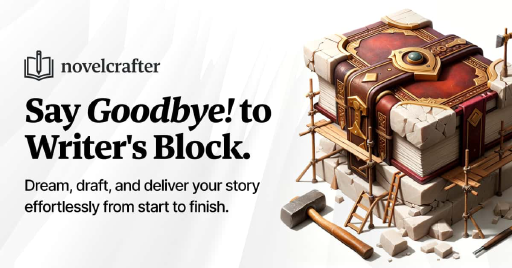Crafting a Compelling Protagonist
The heart and soul of any story is its main character: the one readers cheer for, cry with, or even love to hate. Crafting this character well keeps your audience hooked and your story zooming along. Your leading figure becomes the anchor of your plot and gives readers someone to bond with on the journey through the pages.
Importance of a Strong Protagonist
Why does this key character matter so much? Let’s break it down:
| What Makes ‘Em Tick | Why It Matters |
|---|---|
| Hooking Readers | A good protagonist grabs your readers by the heartstrings and doesn’t let go. They stir emotions, making the story more personal. |
| Moving the Story Along | It’s your protagonist’s jobs and antics that keep the story in motion, no wasted moments here. |
| Spicing Things Up | Nothing gets the drama rolling like a protagonist with some flaws. Those imperfections stir up trouble and excitement. |
| Changing with the Times | As your main character grows, they mirror the story’s themes. Their journey strikes a chord with readers. |
Characteristics of a Captivating Protagonist
Crafting a protagonist who sticks in your readers’ minds means giving them some core qualities:
| What They’ve Got | What it Means |
|---|---|
| Down-to-Earth Traits | Readers need to feel what your character feels, whether it’s kindness or sheer grit. Stay human. |
| Flaws and Fortes | Nobody’s perfect, and that’s a good thing. The rough edges make your character real, while strengths guide them through challenges. |
| Clear Mission | Knowing what they want keeps things spicy. Goals keep readers engaged in the character’s journey. |
| Layers and Depth | Forget the flat folks. Give your hero some past and passions. |
| Standout Voice | When your characters talk, they should have a flair that’s all their own. |
Creating a strong protagonist is no small feat but it’s the magic that makes stories sing. Want to dive deeper into the world of character-making magic? Check out how to create realistic characters and how to craft memorable characters. These tips have your back for building characters that connect and thrill.
Establishing Your Protagonist
Alright, so you want to brew up a character that sticks with readers? Start by diving into their past and discovering what makes them tick. Here’s how to shape a character that’s not just memorable but feels like they could stroll off the page and join you for a coffee.
Background and Motivations
Think of your protagonist’s background as their secret sauce; it flavors every decision and attitude they have. Ponder how their childhood, culture shocks, and those big life moments have molded them into the person they are today.
Key Questions to Ask:
- Were they the kid who chased ice cream trucks barefoot, or the one nose-deep in storybooks?
- What curveballs has life pitched at them?
- What’s the fire in their belly driving them forward?
Grasping these motivations will lend authenticity to your character’s journey. They’ll make better sense and readers will find themselves nodding along with their decisions.
Flaws and Strengths
The best protagonists are a mashup of superpowers and kryptonite. Flaws make them human, like those little quirks and foibles everyone has—the stuff that makes people say, “Hey, that sounds like me!”
Common Flaws:
 What Poetry Feels Like
What Poetry Feels Like| Flaw | Description |
|---|---|
| Perfectionism | Can’t let go of the reins; everything has to be just so. |
| Impulsiveness | Tends to jump headfirst without testing the water. |
| Self-doubt | Hesitates like crazy, missing shots they could have taken. |
Common Strengths:
| Strength | Description |
|---|---|
| Empathy | Feels what others feel, and that’s a bonding superglue. |
| Resilience | Bounces back faster than a rubber ball in a tiled room. |
| Creativity | Sees solutions in squiggles and shadows and makes magic happen. |
Mix ’em up and let your character dance between triumph and blunder. That tension gives them room to evolve.
Goals and Conflicts
What does your character crave more than a snack at midnight? And what’s stopping them? Goals fuel their actions while conflicts toss a wrench in their plans, keeping the storyline crackling.
Types of Goals:
| Goal Type | Description |
|---|---|
| Personal Goals | Aiming to sort themselves out or just feel good. |
| Professional Goals | Climbing the ladder, building an empire, you name it. |
| Relational Goals | Ties that bind or bridges to build and mend. |
Types of Conflicts:
| Conflict Type | Description |
|---|---|
| Internal Conflict | Wrestling with their inner demons and shortcomings. |
| External Conflict | Problems that come knocking uninvited (society, rivals, etc.). |
| Relational Conflict | Tension in the webs they weave with others. |
By sketching out their aims and the hurdles in their path, you set the stage for a gripping tale packed with twists and turns.
For more character-building tips, browse through works like how to create realistic characters and how to craft memorable characters. These nuggets will supercharge not just your protagonist, but the whole shebang of your story.
Bringing Your Protagonist to Life
Creating a lifelike protagonist grabs hold of your readers and doesn’t let go. You can hook your audience by weaving their story with engaging methods, like letting actions speak louder than words, and developing your character as the tale unfolds.
Show, Don’t Just Tell
Instead of just narrating, let your readers step into your protagonist’s shoes and walk a mile in them. Paint a picture with vivid descriptions, gestures, and dialogue, so readers can actually feel what the character is going through. Make those emotions pop off the page!
Here’s how to make your scene more visual:
-
Use Descriptive Language: Don’t just say, “She was sad;” let her emotions unfold. Try, “She slumped against the couch, gazing at nothing, as silent tears trickled down.”
-
Dialogue: Craft conversations where your character’s words reveal their inner world. Let them speak their heart, or sometimes not speak at all, to show what they’re really feeling.
-
Body Language: Let the character’s moves do the talking. Shuffling feet or glances that refuse to meet another’s can ooze awkwardness or tension without saying a word.
Want to explore emotions further? You might find this helpful: creating emotional characters.
Character Growth Throughout Their Journey
To take a character from flat to fabulous, they must evolve through challenges and interactions. Watching how they react and grow in light of what they face makes them come alive.
Consider these key points for character growth:
-
Defining Moments: Pinpoint situations where your protagonist faces a real test to their beliefs or motivations. Those are the instances that push them to grow.
-
Facing Conflicts: Look at how your character handles hardships. Their choices in tough spots show who they really are and help them to develop.
-
Learning from Blunders: Don’t shy away from letting your protagonist trip up. These blunders make them human and authentic.
| Development Aspect | Quick Description |
|---|---|
| Internal Conflicts | Struggles within that test their own values. |
| External Conflicts | Hurdles from outside forces or people. |
| Relationships | How bonds with others shape them. |
Over the course of your story, reveal how these trials change your protagonist, steering them toward their goal. For more tips on character development, take a look at crafting memorable characters.
By following these strategies, your protagonist will stand out and pull readers deeper into their adventure. Exercise those writing muscles with some creative writing exercises to polish your knack for bringing characters to life.
Interactions and Relationships
Breathing life into your protagonist aligns as crucial as plot twists. Relationships deepen the layers of your story, adding a sprinkle of spice to your overall narrative.
Developing Dynamic Relationships
To sculpt interesting dynamics, consider the colorful tapestry of connections your main character weaves with others. From camaraderie to rivalry and everything in between, each relationship should bring something unique to the tale.
Consider these flavors of relationships:
| Relationship Type | Features |
|---|---|
| Friendship | Trust, support, and encouragement—peeling back vulnerabilities. |
| Mentorship | Offers wisdom, a nudge toward growth. |
| Antagonism | Sparks fly with opposing motives, adding tension. |
| Romance | Feelings, bonds, and change in abundance. |
Let your protagonist’s connections bristle with growth, friction, and resolution. These conversations invite complexity, making things feel real. For further exploration, check out our piece on creating believable characters.
The Protagonist’s Impact on Other Characters
How your protagonist engages others isn’t merely for their own journey—it’s a wave that affects the whole crew. A hero who grabs attention often ignites change, prompting supporting cast members to face their own hurdles.
Like this:
- A bold hero might encourage a quiet sidekick to open up.
- A wavering hero could plant seeds of doubt in a villain’s mind.
- A struggling lead might band together a diverse team for a shared mission.
Ensure these scenarios feel like they’ve jumped off the page. Show readers relationships that shape both your protagonist and the people orbiting them.
Also, ponder on how the main character’s beliefs and choices challenge the world around them. The fallout from decisions only pulls readers deeper into the story. For writing advice on this matter, peruse our article on writing better stories.
By leaning into these bonds and your protagonist’s influence, you can craft a tale as rich as grandma’s famous cookies and as gripping as a page-turner should be.
Engaging the Reader
Getting readers to vibe with your main character is key for a story that grabs attention. When folks connect with your character, they’re hanging on every twist and turn, eager to see what happens next.
Creating Emotional Depth
Bringing real depth to your protagonist means painting their emotional picture with all the shades: what makes them tick, what they dream about, what they dread, and how they handle life’s curveballs. Genuine characters hit readers right in the feels.
| Emotional Element | Description |
|---|---|
| Motivation | What’s giving them that push? Dig into what they really want. |
| Fear | What sends shivers down their spine? It makes them more believable. |
| Desire | Highlight what they crave deep down; it’s essential for their growth. |
| Conflict | Toss in both outside challenges and inner turmoil to see how they handle it. |
Using things like inner dialogue or moments of reflection can make that emotional connection even stronger. Share what’s swirling in their head during those make-or-break moments to let readers walk in their shoes.
Building Empathy for the Protagonist
Getting readers to care about your main character means making them real and relatable. The realer they are, the more readers feel like they’re right there with them. Here’s how you can help readers connect:
| Strategy | Description |
|---|---|
| Flaws | Nobody’s perfect, so show those little quirks and mess-ups. They make your character human. |
| Vulnerability | Open up about their weak spots or struggles; it gets readers on their side. |
| Growth | Let them learn and change through their experiences, bringing readers along for the ride. |
| Relatable Situations | Put them in spots that folks have been in or can imagine themselves in for that instant bond. |
These elements give your character the depth they need, showing readers who they really are underneath it all. For more storytelling hacks, check out our guides on how to write better stories and how to create emotional characters. Nurturing that empathy for your protagonist means readers are hooked, invested, and eager to see where the story takes them.
Protagonist Evolution
Building a strong main character means making sure they grow and change as the story goes along. This transformation doesn’t just make the character feel real; it beefs up the whole story and connects with your audience on a personal level.
Growth and Change
Think of your protagonist’s journey as a roadmap of personal ups and downs that hit home for readers. This growth comes from tackling life’s hurdles, learning from blunders, or rolling with the punches from new situations. Here’s a breakdown of traits that you can use to map out your character’s journey:
| Trait | Starting Point | Ending Point |
|---|---|---|
| Confidence | Shaky | Rock-solid |
| Empathy | Self-focused | Kindhearted |
| Resilience | Quick to give up | Unyielding |
| Relationships | Alone | Surrounded |
As you craft this character arc, zero in on the big moments that push your protagonist forward. These critical events might shake up their core beliefs, bring new friends into the mix, or make them look in the mirror and face their imperfections. For other tips, sneak a peek at how to write better stories.
Keeping Your Protagonist Memorable
To make sure your protagonist sticks in the reader’s mind, sprinkle in unique quirks and traits as they grow. Readers should not just see the changes but feel them too. Here are some tips to keep the character’s evolution engaging:
- Show Their Flaws: Every lovable hero has their share of hang-ups. Relatable imperfections add layers and make your character more believable.
- Use Their Past: A well-rounded backstory can give insights into what your character wants, what they fear, and why they tick the way they do. For more on this, check out how to create realistic characters.
- Keep Readers Guessing: Toss in some unexpected decisions that show more sides of your character. This will keep readers hooked and intrigued by the character’s journey.
- Highlight Connections: Show how your protagonist’s growth ripples through their relationships with others. This shared journey can make the story’s emotional punch even stronger.
To polish your writing chops, dive into different creative writing exercises that help deepen character insight. A compelling protagonist is not just about having a path of growth but also showing relatable struggles and transformations that leave a lasting mark on your readers.


 Grab my poetry book, 'we're all just wanderers in the end' Here
Grab my poetry book, 'we're all just wanderers in the end' Here AD: Your Book Finally Written...
AD: Your Book Finally Written...